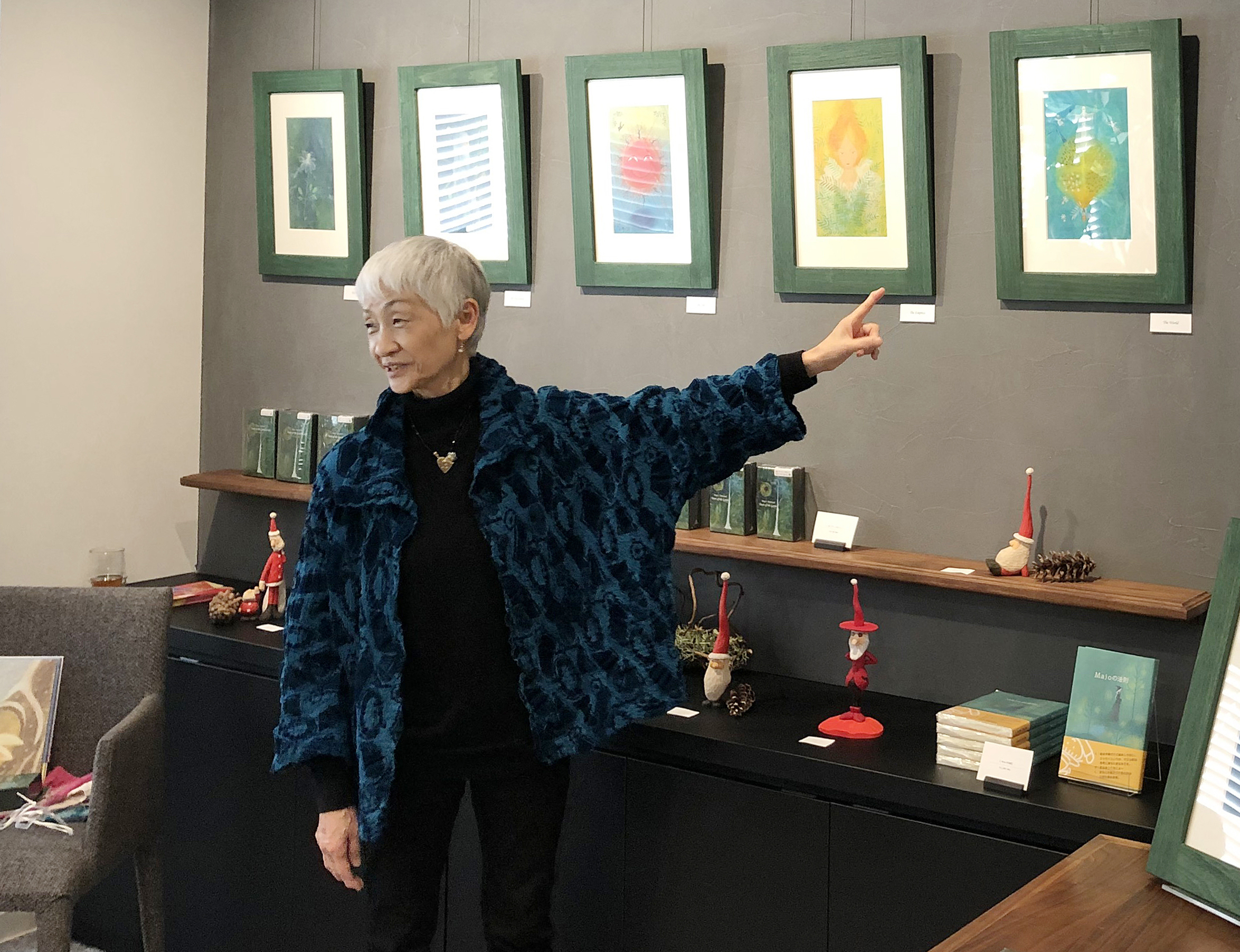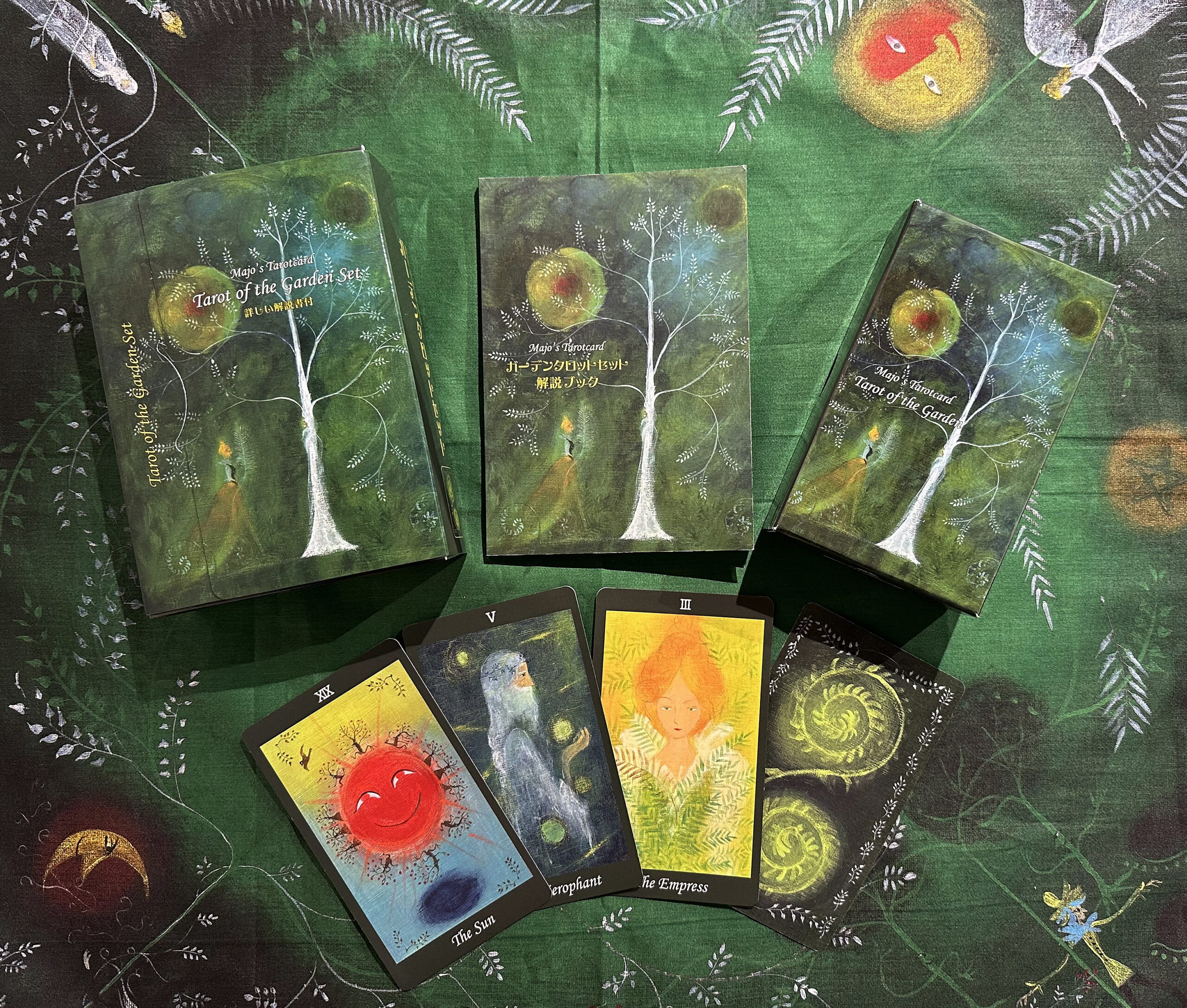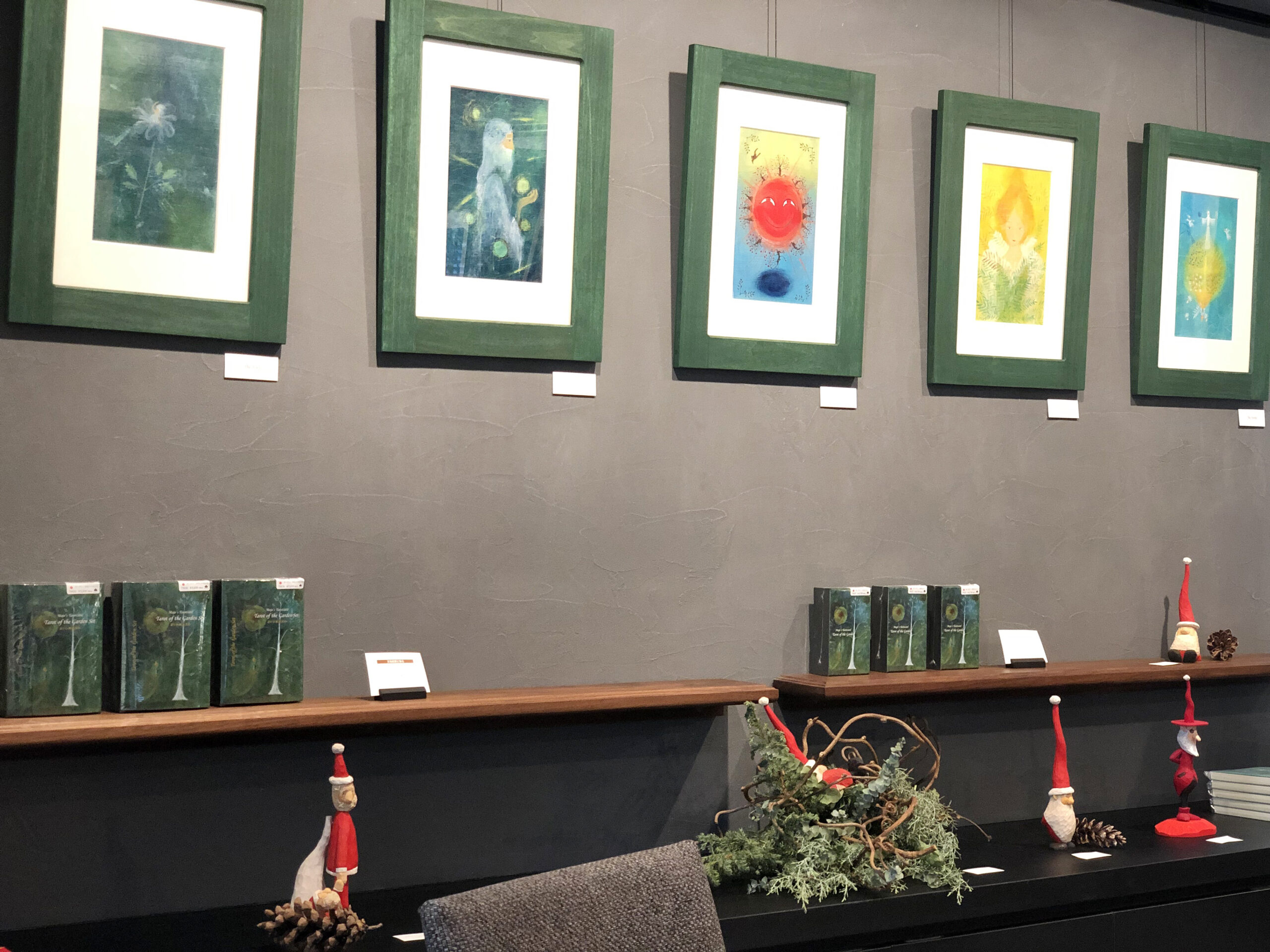INTERVIEW | 2023.02.01
Vol. 3
Director of Yatsugatake
“Ehonmura” and Picture Book Author
【Majo】

1. About Majo herself
— Majo is the director of “Ehonmura” and a picture book author in Yatsugatake. What kind of facility is “Ehonmura”?
It is the first library in Japan specializing in picture books.
The theme is “To the hearts of children from 0 to 100 years old.”
The warmth of the wood and picture books docked by the village head, Tasaburo Matsumura, is important to the space.
— The name “Majo”, when did you start to be called so?
After publishing the “Majo Majo Series” of picture books published by BL Publishing in 1992, when we opened the Ehonmura, the children in the plastic art class started calling me “Majo-sensei, Majo Majo”.
In Ehonmura, a library specializing in picture books, my name is “Masako Matsumura (in Chinese characters)”.
The picture book author’s name is “Masako Matsumura (in Japanese Hiragana)”.
And I use Majo (in Japanese Katakana or in alphabets) for tarot, marionette, and other mysterious (occult) subjects.
I am not very good at using different social faces, so I use different names to play different roles.
— Yatsugatake has an image of rich nature. What is life in the forest like?
Yatsugatake forest, 40 years ago, was a deep forest.
Deer, rabbits, pheasants, and many other small animals cross our yard.
We cherish such a life every day.
— Are from Yatsugatake?
I am often asked this question and answer, “I am from Neverland.”
An island 15,000 feet above Norway, isn’t that nice?

2. About your relationship with Tarot
— Could you tell us about your first encounter with the Tarot?
First of all, I am grateful to the old man who brought the “Witch of Tokyo (the vice director of the museum)” and “Majo of Yatsugatake” together before they met in this world.
At that time, the old man smiled and said, “A new era begins here.”
“Was he referring to the Tarot??” I have wondered about it from time to time, but recently it seems to me that it is true.
I never thought I would meet the Tarot! I am always surprised, and I am always discovering new things.
I feel happy to be able to draw the future while unraveling the Tarot, which is filled with the wisdom of the wise.
— You draw picture books and you draw tarot cards. Is there any difference when you paint?
There is no difference. It is a profound art of “telling the truth,” “realizing dreams,” “harmony,” and “listening to the wind” that lies behind picture books and tarot cards.

3. About the newly released Tarot
“The Garden Tarot”
— What kind of Tarot is the Garden Tarot?
The garden is familiar to me, a cross in the center, from which I view the world.
It is a dialogue between the nymphs and spirits of the plants and trees.
The reference material is a lot of books and some other tarots and their commentaries.
I also use a wide variety of illustrated books and local legends that seem to have nothing to do with the Tarot.
— The Forest Tarot was only the Major Arcana. The Garden Tarot is a full deck of 78 cards, including the Minor Arcana.
The Major Arcana of the Garden Tarot is based on the laws of the universe, and the Minor Arcana are based on the life around us.
I wasn’t sure about it, but with the recommendation and encouragement of the deputy curator of the museum, I was able to complete it.
— Each of the Major Arcana has a unique four-Chinese-character idiom.
I started writing this naturally, too.
I wondered if I should break the basics. I was a little worried, but as I placed the positive/reverse positions on the picture, I felt something unnatural.
I wondered what was unnatural.
I suddenly thought, “I wonder if the card reader can relate himself/herself to the deeper meaning of Kanji (Chinese characters).” I was a fan of Kanji dictionaries when I was a child.
I remembered that when I was a child, I used to enjoy reading kanji dictionaries, and although I had no idea what they meant, I enjoyed staring at the characters with my imagination.
Later, a friend told me that “four-Chinese-character idioms” were created for “fortune-telling” in the olden days, and I thought it was a fusion of Western and Asian cultures.
21 WORLD “Absolute Harmony”.
— I feel that the suits of the Minor Arcana also have some meaning.
Agasha (Wand) is the Fern Fairy. “I have come to inform you what the Law is,” she gave me an image.
Silver Birch (Sword) is the spirit of the birch. “Write the future with your own hands,” she told me.
Love (Cup) is the will of the earth. The spiritual earth is still searching for the “space of love.”
Ground (Pentacle) is a network of moss. “What happens on the surface of the earth is instantly communicated to the world in space,” teaching us to be grounded and to think.
I asked them to take on the role of suits in the hope that they would inform us that we are nurtured by the planet which is home to such unique spirits.

4. About “Dialogue with the Self”
— What is Majo’s method of “dialogue with the self”?
Tough question!
It might be to connect with the earth rather than to dialogue with myself.
PROFILE
- Majo
Majo is the organizer of Ehonmura, Japan's first library specializing in picture books, located in Yatsugatake.
She is a picture book author, a painter (Naive artist), and a herb coordinator.
She introduces picture books, nature, and the universe on FM Yatsugatake.
She is also active as a storyteller to expand the world of picture books.